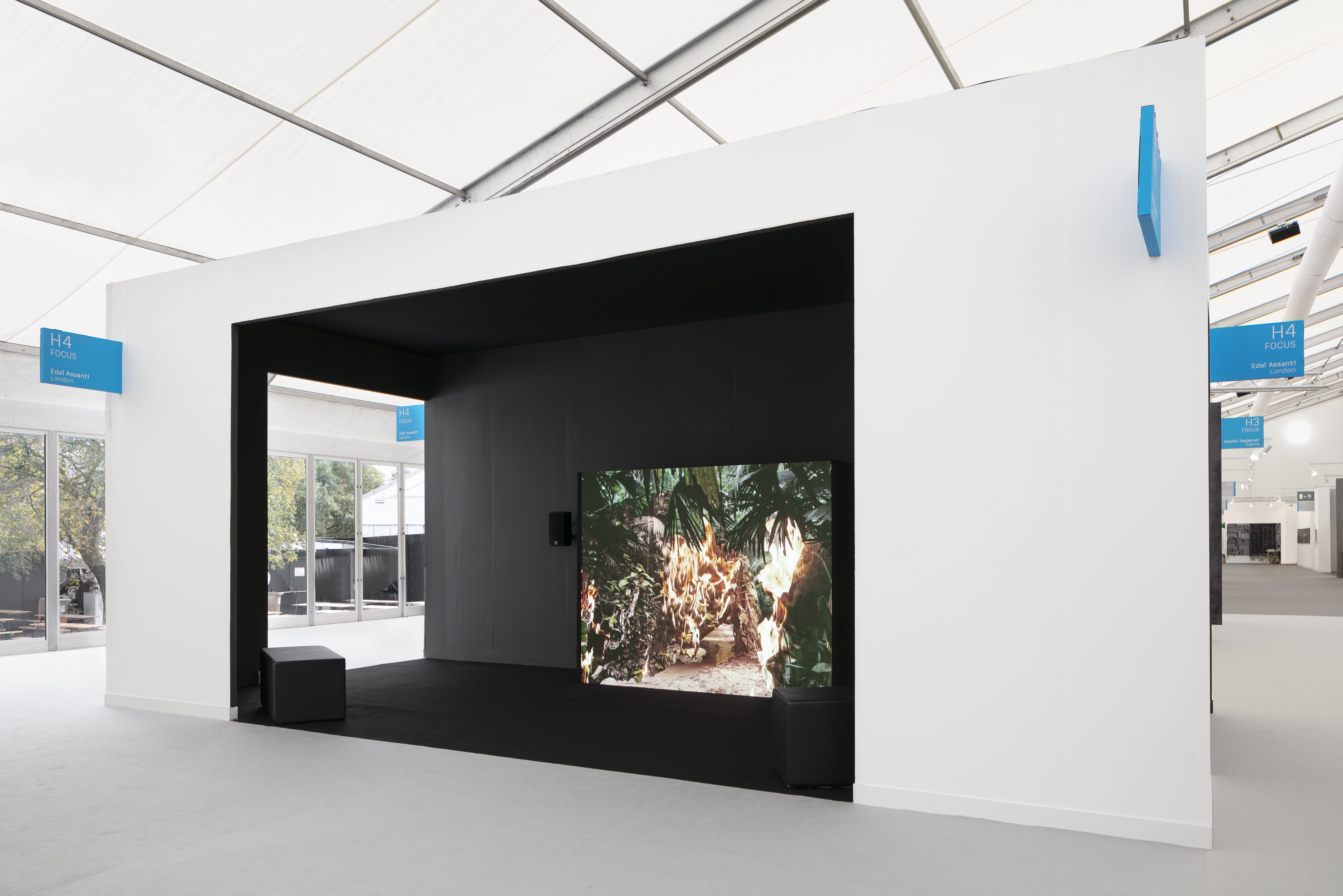14 October 2021 Frieze London, the British capital’s premier art fair, returned in-person on Wednesday after a pandemic-imposed break, and there was an air of excitement as people quaffed champagne and masks seemed to be optional. Many artists were present, some having crossed continents, adding to the sense of celebration. Several galleries reported brisk sales, with museums and private foundations snapping up Stephen Friedman’s entire solo booth dedicated to Deborah Roberts at prices between $125,000–$150,000 and blue-chip galleries Hauser & Wirth, David Zwirner, White Cube, Thaddaeus Ropac, and others also placing top-tier works with collectors and museums.
While blue-chip galleries were out in force, young galleries brought some of the most exciting offerings, as reflected by Tate’s acquisition of two works by Sung Tieu from Emalin and a photographic series by Rene Matić from Arcadia Missa. The promotion of emerging artists is a key objective, Frieze artistic director Eva Langret said in a publicity video: “After everything we’ve been through, it was really important for us to think about what the fair means as a platform and how it can contribute to elevating new voices.”
Below is a look at some of the top picks of the fair, which runs through Sunday, September 17.
Noémie Goudal, Below the Deep South, installation view, Edel Assanti, Frieze London, London, UK, 2021
French artist Noémie Goudal’s immersive film installation Below the Deep South (2021) is a showstopper. It opens with shots of lush tropical foliage, accompanied by chirping jungle sounds, but suddenly the scene combusts. Viewers soon realize it was a trompe l’oeil photograph, behind which another natural environment is revealed. One by one these extraordinarily realistic scenes—there are 15 layers of landscape in all—go up in flames in a mesmerizing sequence that lasts 12 minutes and ends with a vacant industrial unit. The film inevitably prompts thoughts about environmental degradation and climate change but also the instability and flux of the Earth’s geology going back millions of years through “deep time.”


